Let’s be honest. We all have those moments when we doubt our ability to handle unpredictable events.
For example, have you ever been caught in a situation where you wondered, “What would I do if a fire tornado came barreling toward me?” Well, it’s normal to feel a bit unprepared for such a high-stakes scenario, and that’s okay — that’s why we’re here to help.
But here’s some good news: with the right knowledge and actions, even a fire tornado can be survivable.
In this article, we’ve provided you a guide on how to survive a fire tornado to help ease that nagging guilt of not being ready for what life might throw at us.
Ready to conquer this fear and gain some lifesaving insights? Good! Let’s dive right in and make sure you’re equipped to face the whirlwind when, or if, it comes.
In This Guide
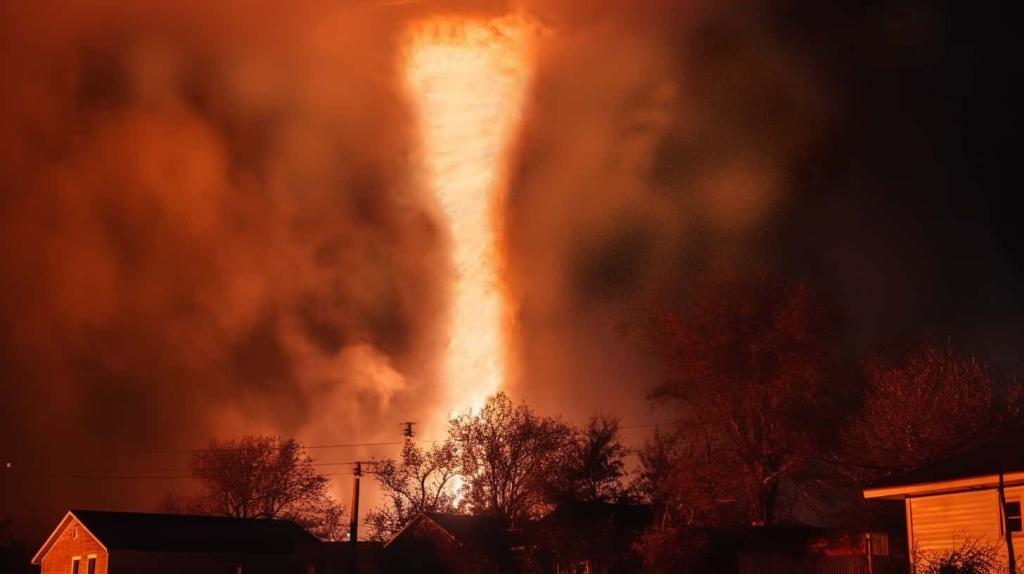
Understanding Fire Tornadoes
Before diving into survival strategies and preparation measures for a fire tornado, let’s first gain a clear understanding of what these phenomena actually are.
Formation And Characteristics Of Fire Tornadoes
Fire tornadoes, also known as fire devils, fire swirls, or fire twisters, are a rare event and fascinating natural phenomenon. They occur when intense heat from wildfires causes the air to rise and start rotating.
As the air gains momentum, it can form a whirling column of fire, smoke, and debris. Imagine a blender full of flaming twigs and leaves spinning at high speed — that’s somewhat how a fire tornado looks and behaves.
These whirls can then contract a fire into a tornado-like vortex that sucks in debris and combustible gasses.
They can be up to 500 meters tall, move at speeds of up to 22 mph, and have a temperature exceeding 2000 °F.
These massive fire tornadoes can be incredibly dangerous due to their sheer size and intensity. Some even possess the same destructive power as mega tornadoes.
So how can you recognize one when it’s happening around you? Imagine a typical tornado funnel, but instead of wind and rain, it’s filled with flames, smoke, and glowing embers.
Fire tornadoes can also produce their own wind, further spreading wildfires and making them even more difficult to control.
H/T to @KnowableMagazine for this video.
Difference Between Fire Tornadoes And Severe Thunderstorms
While both fire tornadoes and severe thunderstorms can cause widespread damage, there are some key differences between the two.
For one, fire tornadoes are usually born from wildfires, while severe thunderstorms are caused by unstable atmospheric conditions.
A fire tornado’s destructive force comes from intense heat, flames, and smoke, whereas severe thunderstorms create damage through strong wind speeds, heavy rain, hail, and lightning.
In other words, a fire tornado is like a regular tornado with the added danger of fire combined into one terrifying event.
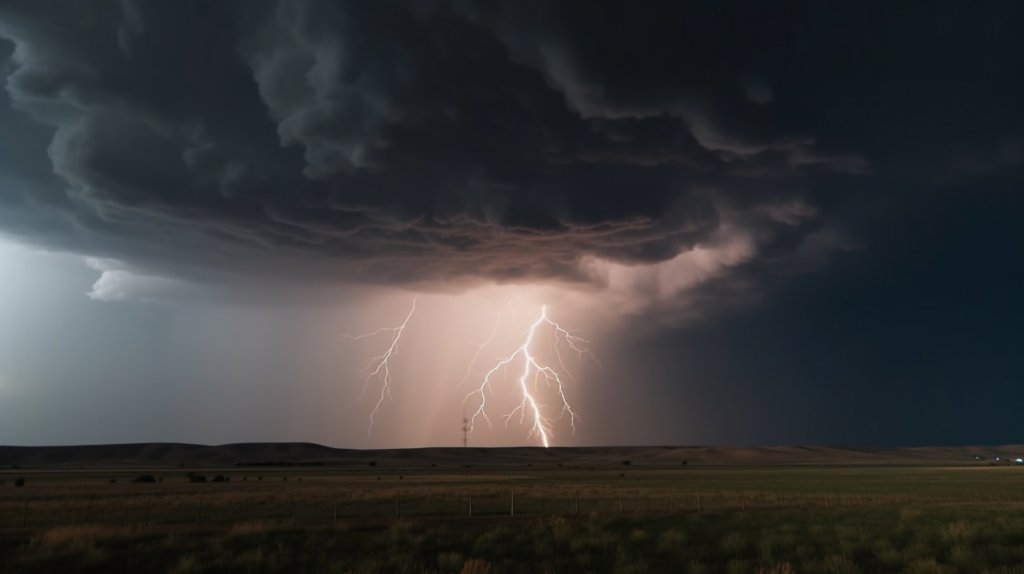
How To Survive A Fire Tornado
Fire tornadoes are a rare but terrifying natural phenomenon.
Combining the destructive force of a tornado with the intense heat of a wildfire. These spiraling infernos present a significant risk to anyone in their path.
However, by understanding what they are and how to react, you can increase your chances of survival.
Here’s a guide on surviving a fire tornado:
1. Stay Informed And Be Prepared During A Fire Tornado
Keep yourself updated with the latest weather conditions, especially if you are living in or traveling to fire-prone areas.
Sign up for emergency alerts on your phone, listen to the radio for updates, and follow reliable sources on social media.

Also, have an emergency survival kit prepared with essentials such as food, water, medical supplies, and a battery-powered radio.
2. Early Evacuation During A Fire Tornado
The best way to survive a fire tornado is not to be near one at all. If you receive an evacuation order or believe a fire tornado may be developing, leave the area immediately.
Choose a route that moves away from the fire and head towards a built-up area, if possible.
3. Find Shelter During A Fire Tornado
If you’re caught in the open and unable to evacuate, find a shelter that can protect you from the heat and smoke.
When seeking shelter in a building, head towards the underground shelter or the lowest floor. Make sure to cover yourself with soil or a wet blanket to shield against the heat.
But you should be cautious; avoid long-span buildings, such as shopping malls, theaters, and gymnasiums, as their roofs might be supported only by the walls.
Look for a small, windowless room like a closet or a bathroom, which will provide the most protection from the fire tornado.
In case a window breaks due to the extreme heat or wind, it’s wise to cover yourself with anything you can find, like a mattress, sleeping bag, or blankets to shield yourself from flying debris.
While evacuating and taking shelter, it’s essential to tune in to your local disaster services or weather broadcasts for updates.
Keep your mobile device charged, and if possible, pack a portable charger so that you can stay informed and communicate if necessary.
4. Fire Tornado: Stay Low and Cover Up
Cover your mouth and nose with a cloth to avoid inhaling smoke, and try to stay as low as possible while moving to a safer place.
5. Don’t Drive Through Smoke Or Flames During A Fire Tornado
If you’re in a vehicle, do not attempt to drive through smoke or flames. This can lead to engine failure or a loss of visibility.
Instead, park your vehicle in a clear area, stay inside, and keep the engine running so the air conditioning can work.
6. After A Fire Tornado
Once the fire tornado has passed, check yourself and those around you for any injuries.
Contact emergency services and avoid touching any hot or burning objects.

Recognizing Fire Tornado Risks
Warning Signs Of A Fire Tornado
To successfully survive a fire tornado, it’s crucial to identify tornado warning signs as early as possible. You should pay attention to the weather conditions, particularly when there’s an increased risk of wildfire.
Keep an eye out for a rotating funnel-shaped cloud or an approaching cloud of debris — these are telltale indicators of a tornado.
When it comes to fire tornadoes, a loud roar could signal impending danger. This sound is often compared to a freight train, so if you hear something similar, take it as a sign to act quickly.
Be sure to tune into the National Weather Service or your local NOAA Weather Radio station for tornado watches and warnings in your area.
Areas Prone to Fire Tornadoes
With severe weather conditions becoming more frequent in the United States, it’s important to be aware of the regions more susceptible to fire tornadoes.
The Midwest and the Southeast are known for having a higher risk for tornadoes, and areas with abundant dry vegetation, underbrush, or shrublands are particularly vulnerable to wildfires.
In this case, combining these two factors can create the perfect storm: fire tornadoes.
Remember, recognizing the warning signs and areas prone to fire tornadoes is key to staying safe during these intense natural events.
Always stay informed and be vigilant, so you’ll be better equipped to navigate and survive a fire tornado should one come your way.
Preparing For A Fire Tornado
Creating A Home Safety Plan For A Fire Tornado
To prepare for a fire tornado, you should begin by creating a home safety plan that includes all your family members.
Discuss the safest place in your home for everyone to gather during a fire tornado. This spot should ideally be on the lowest floor, in an interior room with no windows.
Also, make sure everyone knows how to get there quickly in case of an emergency.
It’s essential to educate family members about the risks of gas lines and power lines during a fire tornado.
Make sure everyone knows how to shut off gas lines and stay away from any downed power lines in the area.
It would help if you also had a designated meeting point outside your home in case an evacuation becomes necessary.

Gathering Essential Supplies For A Fire Tornado
When facing the possibility of a fire tornado, it’s important to have essential supplies handy. As a part of your preparations, gather items such as the following:
- A battery-powered weather radio to stay informed of any watches or warnings
- A fire extinguisher for any small fires that might break out
- A first aid kit with essential medical supplies
- Enough non-perishable food and water for at least three days
- Flashlights or headlamps with extra batteries
- Sturdy shoes and protective clothing
Protecting Your Family During A Fire Tornado
Finding The Safest Location In Your Home During A Fire Tornado
When a fire tornado threatens your safety, it’s crucial to find the best spot in your home to take shelter.
Your priority is to choose a room with no windows on the lowest level of your house. Basements are ideal because they provide the most protection from the heat and flying debris.
However, if a basement isn’t available, opt for a small, windowless room like a closet or bathroom.
Keep doors closed to maintain a barrier between you and the fire tornado, and stay low to the ground to reduce smoke inhalation.

Communicating And Staying Informed During A Fire Tornado
Staying informed and maintaining reliable communication channels are vital during a fire tornado. Ensure you have a battery-powered or hand-cranked radio to receive emergency broadcasts and weather updates.
Your mobile phone also serves as a vital link to the outside world, so keep it charged and close at hand. Create a family communication plan that includes important phone numbers and emergency contacts.
Discuss this plan with your family members and establish a meeting point in case you get separated.
It’s also a good idea to familiarize yourself with your community’s emergency plans and evacuation routes, so you know where to go in case you need to leave your home.
Fire Tornado Safety In Specific Locations
Navigating a fire tornado can be daunting, but knowing how to stay safe in specific locations can make all the difference.
In this section, we will discuss safety precautions for mobile homes and trailer parks, as well as collaborating with local fire departments.
Fire Tornadoes: Mobile Homes And Trailer Parks
Mobile homes and trailer parks are particularly vulnerable to fire tornadoes. If you live in one of these structures, it’s essential to have a plan in place.
First, familiarize yourself with your park’s evacuation routes and community shelters.
In the event of a fire tornado, you’ll want to leave your mobile home immediately, as it can’t provide adequate protection against such strong forces.
Ensure your emergency kit is always up to date, containing essentials like water, non-perishable food, and a first-aid kit.
Keep important documents like identification and insurance information in a waterproof and fireproof container, ready to grab in case of an evacuation.
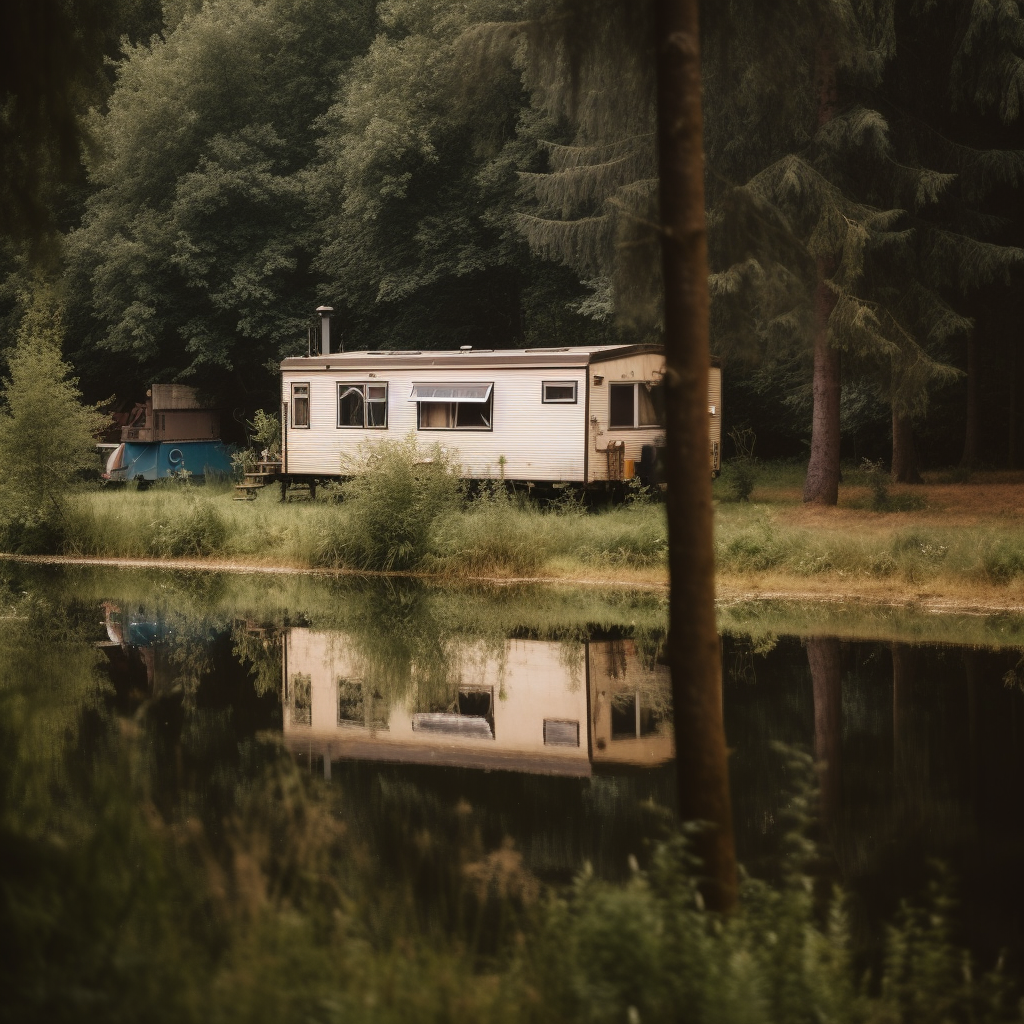
Collaborating With Local Fire Departments About Fire Tornadoes
Local fire departments play a critical role in fire tornado preparedness and response. So it’s a good idea to establish a relationship with them and gather information on what to expect in case of a fire tornado in your area.
Be proactive and attend community meetings or workshops hosted by the fire department to ensure you’re well-informed on fire safety practices.
They may offer valuable insights on safety measures for your specific location, potential hazards in your area, and tips on building a fire-resistant home.
Also, consider volunteering with your fire department’s auxiliary group or community organizations that work closely with first responders during emergencies.
This collaboration not only helps strengthen your community’s preparedness but allows you to gain invaluable knowledge and skills in the process.
Tailor your fire tornado safety plan according to your specific location, whether it’s a mobile home, trailer park, or permanent residence.
Dealing With Fire Tornadoes
Post-Fire Tornado Precautions
When you’re caught in a potentially dangerous situation with new or large fires, it’s important to take precautions. These fires can quickly escalate into fire tornadoes, so it’s crucial to be prepared.
Keep an eye out for any signs of a fire tornado forming, such as swirling smoke and intense heat.
Remember to stay alert and avoid getting cornered by flames. It’s always best to have multiple escape routes in case one gets blocked.
The first thing you should do is try to evacuate the area as quickly as possible. You can follow these simple steps to increase your chances of survival:
- Keep a safe distance from the fire’s path
- Stay low and cover your nose and mouth to avoid inhaling smoke
- Stick to cleared areas without dense vegetation to reduce your exposure to embers and flames
Cooperating With Emergency Services During A Fire Tornado
During a fire tornado event, it’s essential to cooperate with emergency services. They have the knowledge, skills, and resources to effectively deal with new and large fires.
Here’s how you can assist them in their efforts:
- Follow their instructions: Emergency service personnel are trained to handle such situations. Trust their guidance and adhere to their instructions for a better chance of survival.
- Stay informed: Keep yourself updated on the progress of the fire through trusted sources, such as local news outlets or social media platforms. This will help you plan your next move accordingly.
- Offer assistance if appropriate: If you come across people who need help, offer aid without putting yourself in danger. Remember, the primary goal is to ensure everyone’s safety, including your own.
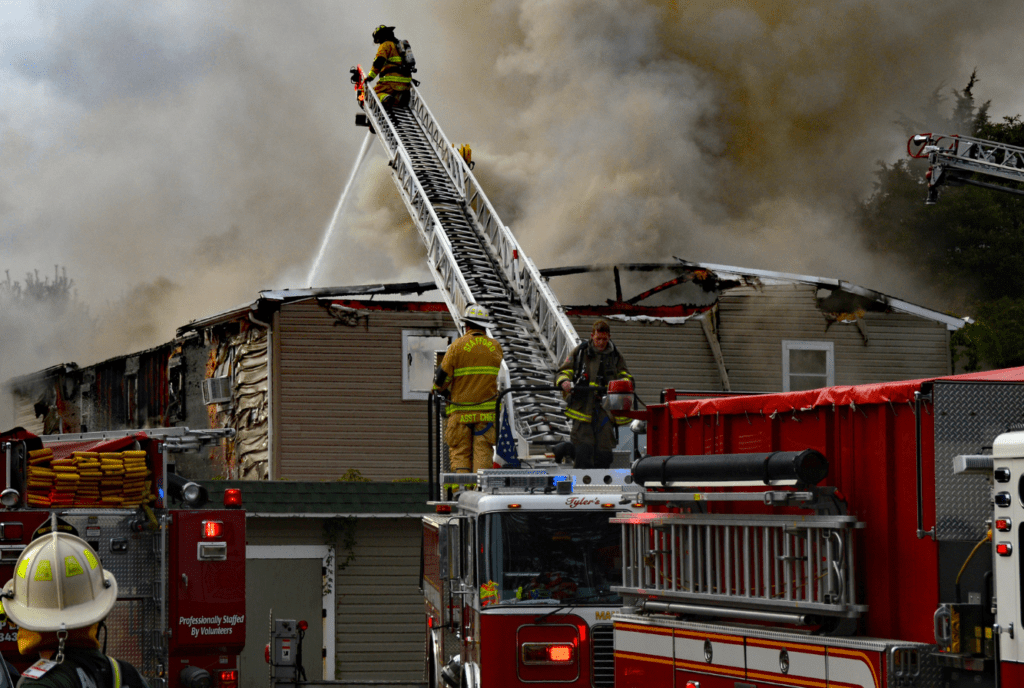
Frequently Asked Questions About How To Survive A Fire Tornado
How long can a fire tornado last?
Fire tornadoes can vary in duration, depending on the conditions fueling them. In general, they can last anywhere from a few minutes to over an hour.
The duration is influenced by factors such as the intensity of the fire, wind conditions, and the availability of fuel.
How can I create a fire tornado preparedness plan?
Developing a preparedness plan for a fire tornado involves the following steps:
- Identify potential risks in your area.
- Establish an emergency communication plan with family members.
- Prepare an emergency kit with essential supplies.
- Determine possible evacuation routes and safe locations.
- Regularly review and update the plan as needed.
Can I safely shelter in place during a fire tornado?
Sheltering in place is generally not recommended during a fire tornado, as they can cause significant destruction and may change direction without warning.
It’s best to evacuate as soon as possible and seek refuge in a safer location.
When should I evacuate due to a fire tornado?
It’s crucial to evacuate immediately if authorities issue an evacuation order or if you feel personally threatened by a fire tornado. Don’t delay; get moving as soon as possible to protect yourself and your family.
What supplies should I have on hand for a fire tornado?
In case of a fire tornado, it’s essential to have supplies such as water, non-perishable food, a first-aid kit, and a flashlight with extra batteries.
Also, consider having a battery-operated or hand-crank radio to stay informed of the latest weather updates and emergency information.
Why are fire tornadoes rare?
Fire tornadoes are relatively rare because they require specific conditions to form, such as an intense fire, dry fuels, and strong winds.
While these conditions can occur separately, it’s not often they all come together simultaneously to create the phenomenon of a fire tornado.
However, with climate change and an increase in wildfire incidents, it’s essential to stay prepared and informed about this dangerous natural event.
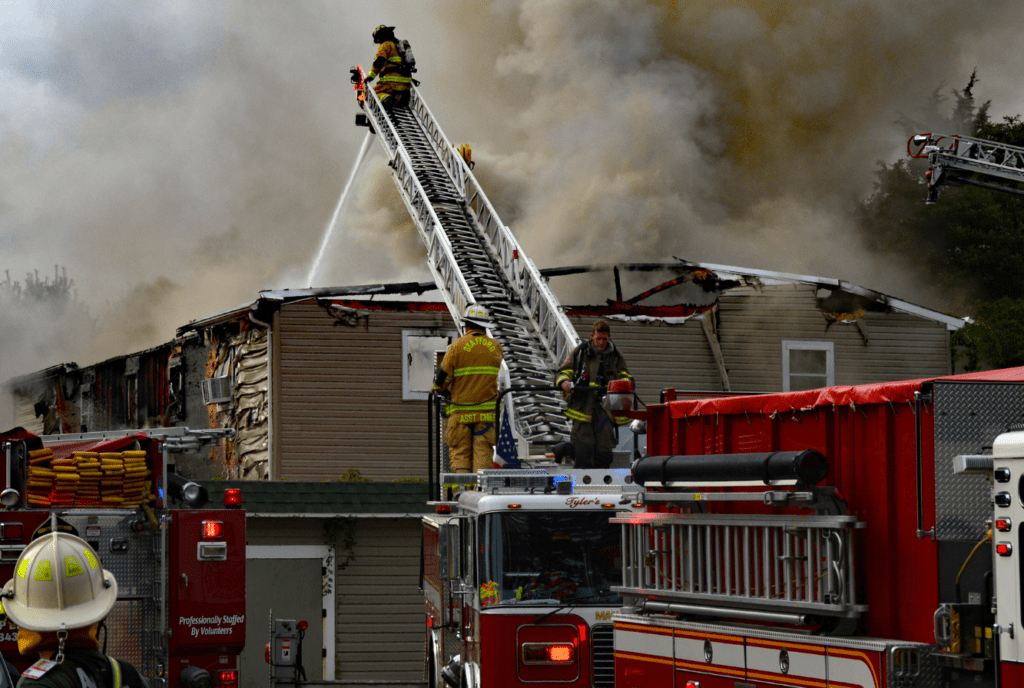
How To Survive A Fire Tornado: Key Takeaways
In the end, surviving a fire tornado is all about preparation and quick thinking. You’ve got to be aware of your surroundings, stay informed, and keep your cool, even when facing a fearsome phenomenon like this.
Your best strategy is to stay one step ahead. Keep an eye on your local weather and fire reports, especially if you reside in regions known for wildfires.
It’s essential to have a concrete evacuation plan and be well-acquainted with all possible exit routes. When there’s a threat of a fire tornado, the time to act is immediately.
Remember, the quicker you respond, the safer you’ll be.
Keep in mind the following:
- Gaining an understanding of fire tornadoes can ease uncertainty and improve preparedness
- Having a well-planned strategy is crucial for surviving a fire tornado and protecting your family
- Recognizing fire tornado risks and being proactive can make a significant difference in safety
In the face of danger, you might discover a strength you didn’t know you had. And despite the challenge, there’s a great deal to learn — about fire tornadoes, about yourself, and about the power of resilience.
So, gear up, stay alert, and know that you’ve got what it takes to weather the storm, or in this case, the fire tornado.
ABOUT THE AUTHOR
Angie Montgomery is the co-founder of Monday Day Prepping. She and her husband Bill have been "prepper's" since 2008. When she's not helping manage the homestead, she enjoys teaching her two boys how to cook and make natural alternatives to cleaners and other household items.

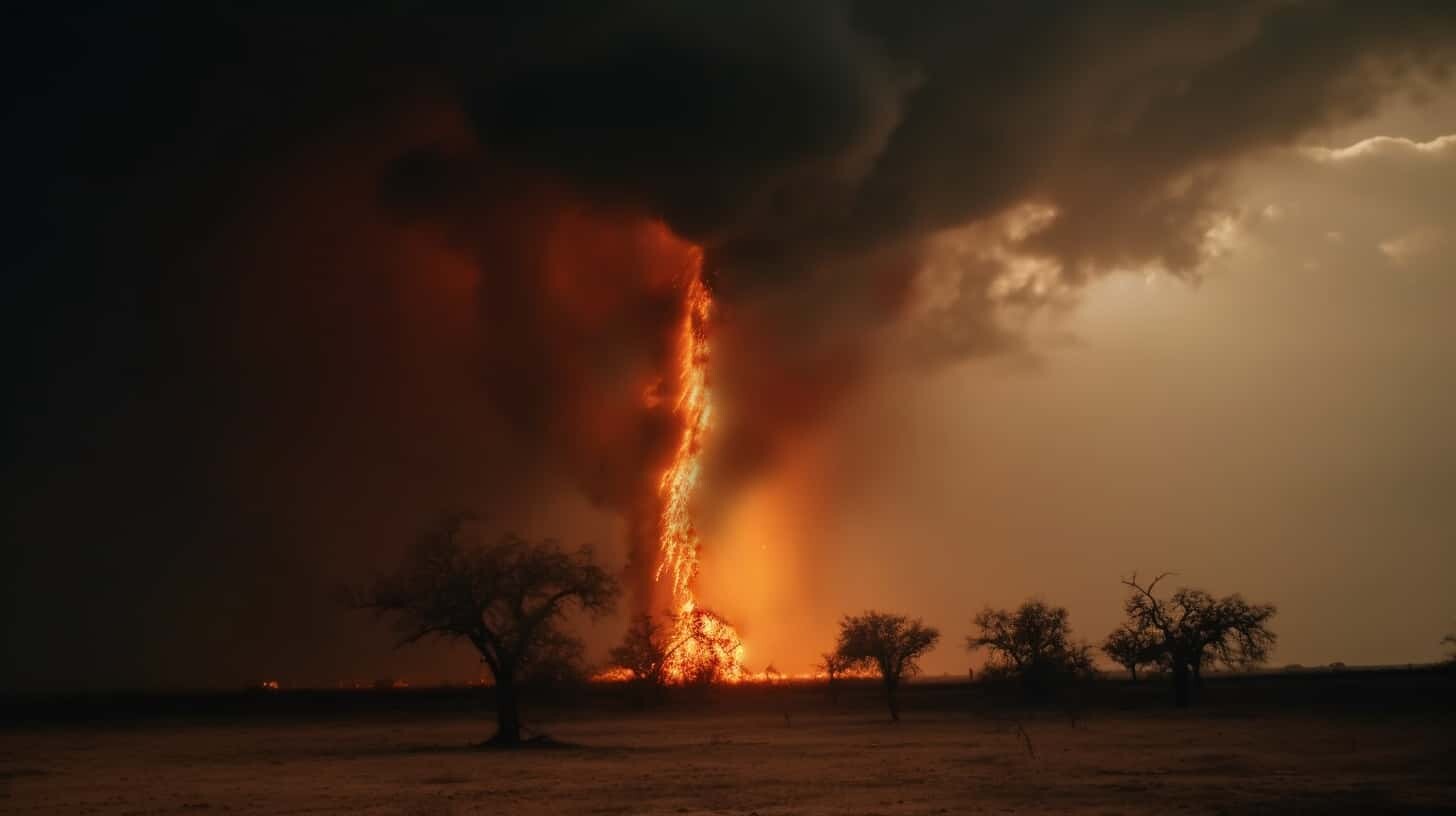
0 Comments